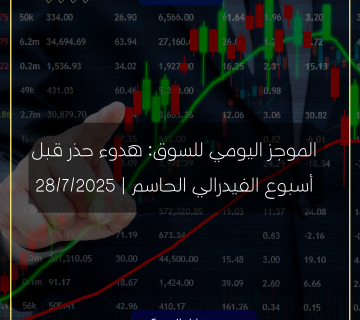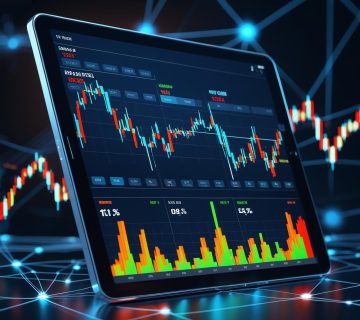Economic Outlook: Eurozone and United States Projections and Their Impact on Currencies
The global economy is a complex and interconnected system, with the Eurozone and the United States playing pivotal roles. Economic forecasts for these regions significantly influence currency movements, impacting forex traders and investors worldwide. This article explores the economic outlook for the Eurozone and the United States, examining how these projections affect currency values and trading strategies.
Understanding Economic Forecasts
Economic forecasts are predictions about future economic conditions based on various indicators such as GDP growth, inflation rates, employment data, and consumer confidence. These forecasts are crucial for policymakers, businesses, and investors as they provide insights into potential economic trends and help in decision-making processes.
Eurozone Economic Outlook
The Eurozone, comprising 19 of the 27 European Union member states that use the euro as their currency, has faced numerous economic challenges in recent years. From the aftermath of the financial crisis to the impacts of the COVID-19 pandemic, the region’s economic stability has been tested repeatedly.
Key Economic Indicators:
- GDP Growth: The Eurozone’s GDP growth has been sluggish, with projections indicating moderate growth in the coming years. Factors such as high energy prices, geopolitical tensions, and supply chain disruptions continue to weigh on economic performance.
- Inflation Rates: Inflation in the Eurozone has been a significant concern, with rates exceeding the European Central Bank’s (ECB) target. The ECB has implemented various measures to control inflation, including adjusting interest rates and engaging in quantitative easing.
- Unemployment Rates: The labor market in the Eurozone has shown signs of improvement, but disparities exist among member states. Countries like Germany have low unemployment rates, while others, such as Spain and Greece, continue to struggle with high joblessness.
Impact on the Euro (EUR):
- Positive Economic Data: When economic indicators such as GDP growth and employment rates show positive trends, the euro tends to strengthen. Investors gain confidence in the Eurozone’s economic stability, leading to increased demand for the euro.
- Negative Economic Data: Conversely, negative economic data can weaken the euro. High inflation rates or poor GDP growth projections can lead to a loss of investor confidence, causing the euro to depreciate against other currencies.
United States Economic Outlook
The United States, as the world’s largest economy, has a profound impact on global financial markets. Economic forecasts for the US are closely monitored by traders and investors, as they provide valuable insights into potential market movements.
Key Economic Indicators:
- GDP Growth: The US economy has shown resilience, with steady GDP growth projections. Factors such as consumer spending, business investments, and government policies play crucial roles in driving economic performance.
- Inflation Rates: Inflation has been a significant concern in the US, with rates reaching multi-decade highs. The Federal Reserve (Fed) has taken measures to control inflation, including raising interest rates and reducing its balance sheet.
- Employment Data: The US labor market remains robust, with low unemployment rates and strong job creation. Employment data, particularly the Non-Farm Payroll (NFP) report, is a critical indicator for forex traders.
Impact on the US Dollar (USD):
- Positive Economic Data: Strong economic indicators, such as high GDP growth and low unemployment rates, typically lead to a stronger US dollar. Investors view the US economy as stable and seek to invest in dollar-denominated assets.
- Negative Economic Data: Conversely, negative economic data can weaken the US dollar. High inflation rates or poor GDP growth projections can lead to a loss of investor confidence, causing the dollar to depreciate against other currencies.
The Interplay Between Eurozone and US Economic Data
The economic relationship between the Eurozone and the United States is complex and multifaceted. Changes in economic conditions in one region can have significant implications for the other, influencing currency movements and trading strategies.
Interest Rate Differentials:
- Eurozone: The ECB’s monetary policy decisions, including interest rate adjustments, play a crucial role in determining the euro’s value. Higher interest rates attract foreign investments, leading to a stronger euro.
- United States: Similarly, the Fed’s interest rate decisions impact the US dollar. Higher interest rates make dollar-denominated assets more attractive, leading to a stronger dollar.
Trade Balances:
- Eurozone: The Eurozone’s trade balance, particularly with the US, influences currency movements. A trade surplus can strengthen the euro, while a trade deficit can weaken it.
- United States: The US trade balance also impacts the dollar. A trade deficit can lead to a weaker dollar, while a trade surplus can strengthen it.
Geopolitical Factors:
- Eurozone: Geopolitical tensions, such as conflicts in Eastern Europe, can impact the euro’s value. Political instability can lead to a loss of investor confidence, causing the euro to depreciate.
- United States: Similarly, geopolitical events, such as trade disputes or military conflicts, can impact the US dollar. Political stability and strong international relations tend to support a stronger dollar.
Conclusion
Economic forecasts for the Eurozone and the United States play a crucial role in shaping currency movements. By understanding the key economic indicators and their impact on the euro and the US dollar, traders and investors can make informed decisions and develop effective trading strategies. Staying updated with the latest economic data and central bank policies is essential for navigating the dynamic forex market.
For further reading on the impact of economic indicators on forex markets, you can visit Investopedia.













![Market Insights Today: Key Trends & What to Watch [July 17, 2025]](https://fxadv.com/wp-content/uploads/2025/07/licensed-image-360x320.jpg)
